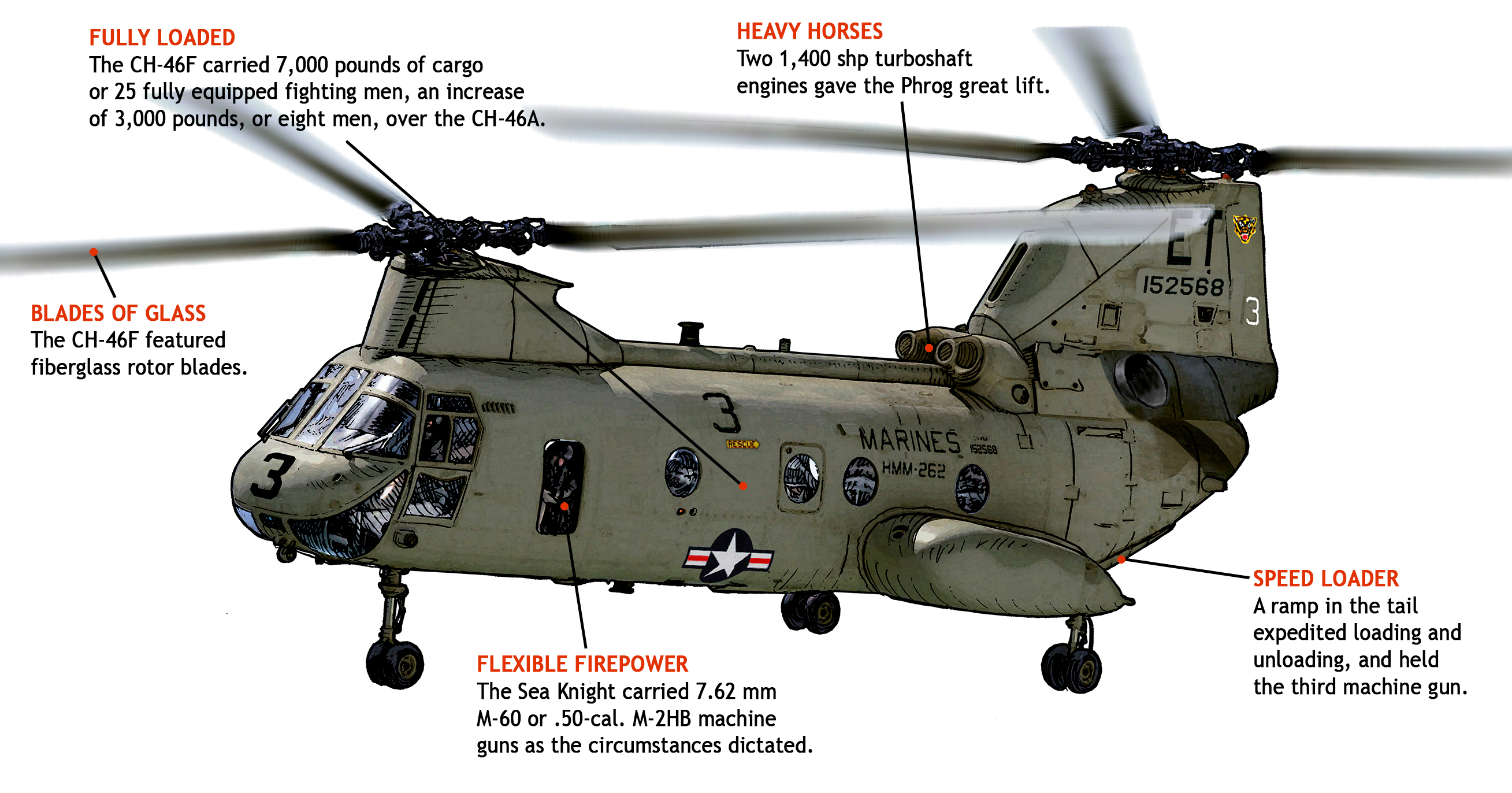The CH-46F quickly became the Marine Corps’ workhorse in Vietnam, used in airmobile assault, combat support and medevac
On January 31, 1968, eight CH-46s from the Marine Medium Helicopter Squadron (HMM) 165 delivered part of the 4th Battalion, 2nd Regiment, of the Army of the Republic of Vietnam into the Citadel in Hue. The weather was marginal, ceiling at less than 300 feet and the landing zone was under enemy mortar fire. Nevertheless, during the 30-day Hue battle, HMM-165 pilots flew wherever there was a need, delivering troops, ammunition and food to ad hoc LZs around the city and evacuating the wounded.
The Marines’ primary lift at Hue, the CH-46 Sea Knight—known as the “Phrog” for its head-on appearance—began life as the YHC-1A, one of two proposed medium lift transports for the Army. The Army chose the larger, more powerful YHC-1B, which became the CH-47 Chinook. When the Marine Corps required a gas turbine–powered replacement for its UH-34 medium lift assault helicopter, Boeing Vertol proposed a smaller version of the YHC-1A, which was designated the HRB-1. Powered by two 1,250-shp T58-GE-8-8B gas turbine engines, the CH-46A, as it was redesignated, carried 17 troops or 4,000 pounds of cargo.
Entering production for the Navy and Marines in 1964, the CH-46A proved underpowered and its transmission unreliable under combat conditions in Vietnam. The shortcomings led to development of the CH-46D, with a more powerful engine, a more robust transmission and stronger, lighter rotor blades. It could descend and climb much faster than the CH-46A or UH-1. Despite the 46D’s improvements, six crashed in 1967 when the entire aft pylon came off. Investigators found the cause was whirl mode flutter—the rotor blade generated “twisting” air pressure, inducing metal fatigue. Engineers strengthened the fuselage, changed the rotor blade design and directed pilots not to do the “hover aft” maneuver.
The more powerful CH-46F entered service in 1968 with improved avionics and all-weather performance, a better navigation system and three M-2 .50-caliber machine guns. It quickly became the Marine Corps’ workhorse in Vietnam, being used in airmobile assault, logistics and combat support; even in medevac and combat search and rescue roles.
Production of the CH-46 ended in 1971 with more than 600 delivered. Ubiquitous in the skies of Afghanistan today, all current Phrogs are Vietnam-era models, refurbished and upgraded. The CH-46 reflects the designs of the early helicopter pioneers and stands as enduring testament to their brilliance and vision.





